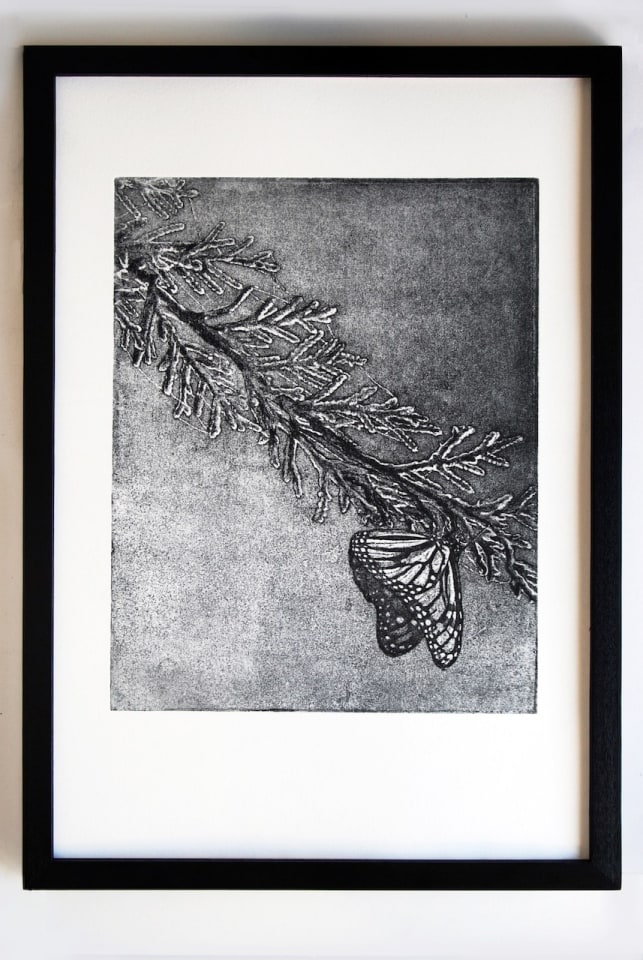Monarch Butterfly, 2023
Etching/drypoint on Somerset 100% cotton rag paper (paper recycled from an earlier work "Flying Geisha Girl")
26 x 38 cm
10 1/4 x 15 in
10 1/4 x 15 in
edition of 9
Description Monarch Butterfly A Monarch Butterfly precariously hanging from a tree branch on its migratory route. Dependant on environmental clues for reproduction, migration and hibernation, the Monarch Butterfly’s short life...
Description
Monarch Butterfly
A Monarch Butterfly precariously hanging from a tree branch on its migratory route.
Dependant on environmental clues for reproduction, migration and hibernation, the Monarch Butterfly’s short life cycle provides a certain level of adaptability.
North American Monarch Butterflies are unique in the they are the only butterfly to makes a two-way migration each year. They fly in swarms from North America and Canada to the same winter roosts, often to the exact same trees in Mexico, traveling up to an epic 4000 kilometres. Their migration is more typical of birds or whales except that the butterflies only make the round-trip once. It is their children's grandchildren that return south the following autumn.
Due to climate change their migration patterns are at risk and in 2022 they were placed on the International Union for Conservation of Nature (IUCN) red list of threatened species.
Monarch Butterfly
A Monarch Butterfly precariously hanging from a tree branch on its migratory route.
Dependant on environmental clues for reproduction, migration and hibernation, the Monarch Butterfly’s short life cycle provides a certain level of adaptability.
North American Monarch Butterflies are unique in the they are the only butterfly to makes a two-way migration each year. They fly in swarms from North America and Canada to the same winter roosts, often to the exact same trees in Mexico, traveling up to an epic 4000 kilometres. Their migration is more typical of birds or whales except that the butterflies only make the round-trip once. It is their children's grandchildren that return south the following autumn.
Due to climate change their migration patterns are at risk and in 2022 they were placed on the International Union for Conservation of Nature (IUCN) red list of threatened species.
